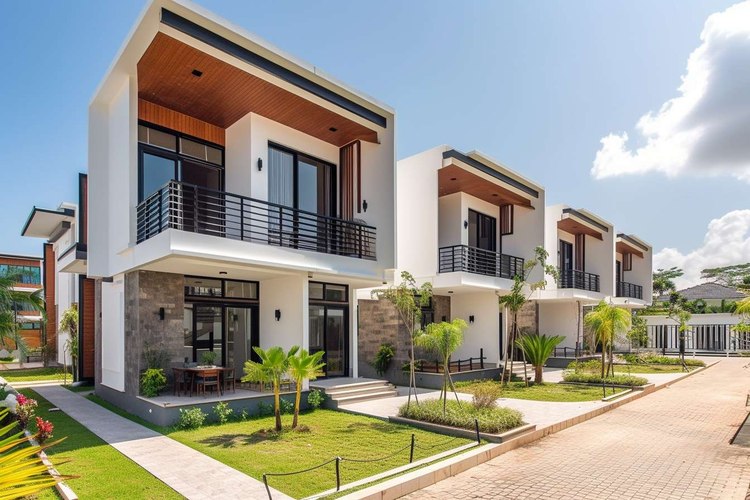Modular Homes: A Modern Living Option Worth Exploring
Modular homes provide a practical and innovative option for modern living. This article outlines how these homes are constructed, what to consider before choosing this style of housing, and key factors like design, permits, and potential cost benefits. It’s a helpful overview for anyone exploring alternative housing options.

What Exactly Are Modular Homes?
Modular homes are permanent residential structures built in sections or modules within controlled factory environments, then transported to building sites for final assembly. Unlike mobile homes or manufactured housing, modular homes must meet the same local building codes and standards as traditional stick-built houses. These homes are constructed on permanent foundations and cannot be moved once assembled, making them indistinguishable from site-built homes in terms of appearance and structural integrity.
The key distinction lies in the construction process: while traditional homes are built entirely on-site, modular homes benefit from factory precision and quality control measures. Each module undergoes rigorous inspection throughout the manufacturing process, ensuring consistent quality standards that often exceed those of site-built construction.
How Are Modular Houses Constructed?
The modular home construction process begins in climate-controlled factory facilities where skilled craftsmen build individual sections using precise measurements and quality materials. Advanced computer-aided design technology ensures accuracy, while assembly-line efficiency reduces construction time significantly. Each module is typically 90% complete when it leaves the factory, including electrical systems, plumbing, insulation, and interior finishes.
Transportation to the building site requires careful planning and specialized equipment. Modules are loaded onto flatbed trucks and delivered to prepared foundations where cranes position each section. Local contractors then complete the assembly process, connecting utilities, installing roofing systems where modules join, and adding finishing touches. The entire on-site assembly typically takes just a few days, compared to months for traditional construction.
What Are the Benefits of Living in a Modular Home?
Modular homes offer numerous advantages that appeal to modern homebuyers. Construction timelines are significantly reduced, with most projects completed in 4-6 weeks versus 4-6 months for site-built homes. Factory construction eliminates weather delays and provides consistent working conditions that enhance build quality.
Cost efficiency represents another major benefit, as factory production reduces material waste and labor costs. Energy efficiency is often superior due to tighter construction tolerances and quality insulation installation. Additionally, modular homes can be customized extensively, with many manufacturers offering hundreds of floor plan options and upgrade possibilities that rival traditional home builders.
What Challenges Might Modular Homeowners Face?
Despite their advantages, modular homes present certain challenges prospective buyers should consider. Financing can be more complex, as some lenders are unfamiliar with modular construction and may require specialized loan products. Site preparation requirements are strict, demanding level foundations and clear access routes for delivery trucks and cranes.
Delivery logistics can create complications in remote areas or locations with narrow roads, overhead obstacles, or strict transportation regulations. Some homeowners associations or municipalities maintain restrictive covenants that limit or prohibit modular construction. Additionally, customization changes after production begins can be costly or impossible, requiring careful planning during the design phase.
What Are Some Popular Design Ideas for Modular Homes?
Modern modular home designs have evolved far beyond basic rectangular boxes, now incorporating contemporary architectural elements and luxury features. Open-concept floor plans maximize space efficiency while creating flowing living areas perfect for modern lifestyles. Popular design trends include vaulted ceilings, large windows, and expansive porches that enhance curb appeal.
Multi-story designs and complex rooflines demonstrate the sophisticated engineering capabilities of today’s modular manufacturers. Energy-efficient features like solar panels, high-performance windows, and smart home technology are increasingly standard options. Custom exterior materials including stone, brick, and fiber cement siding allow modular homes to blend seamlessly into any neighborhood aesthetic.
Modular Home Market and Pricing in the United States
The American modular home industry has experienced substantial growth, with manufacturers like Clayton Homes, Champion Home Builders, and Skyline Corporation leading national markets. Regional builders such as Westchester Modular Homes in the Northeast and Pacific Modern Homes on the West Coast serve specific geographic markets with specialized designs suited to local preferences and building codes.
| Manufacturer | Base Price Range | Key Features |
|---|---|---|
| Clayton Homes | $80,000-$200,000 | Energy Star certified, extensive customization |
| Champion Home Builders | $75,000-$180,000 | Smart home technology, modern designs |
| Skyline Corporation | $70,000-$160,000 | Affordable options, rapid delivery |
| Westchester Modular | $120,000-$300,000 | Luxury finishes, custom architecture |
Prices, rates, or cost estimates mentioned in this article are based on the latest available information but may change over time. Independent research is advised before making financial decisions.
Conclusion
Modular homes continue establishing themselves as viable alternatives to traditional construction methods, offering quality, efficiency, and value that appeal to diverse homebuyer demographics. While challenges exist regarding financing, delivery logistics, and local regulations, the benefits of reduced construction time, cost savings, and energy efficiency make modular construction increasingly attractive. As manufacturing techniques advance and design options expand, modular homes are positioned to play an important role in addressing America’s housing needs while providing homeowners with quality residences that meet modern living standards.




